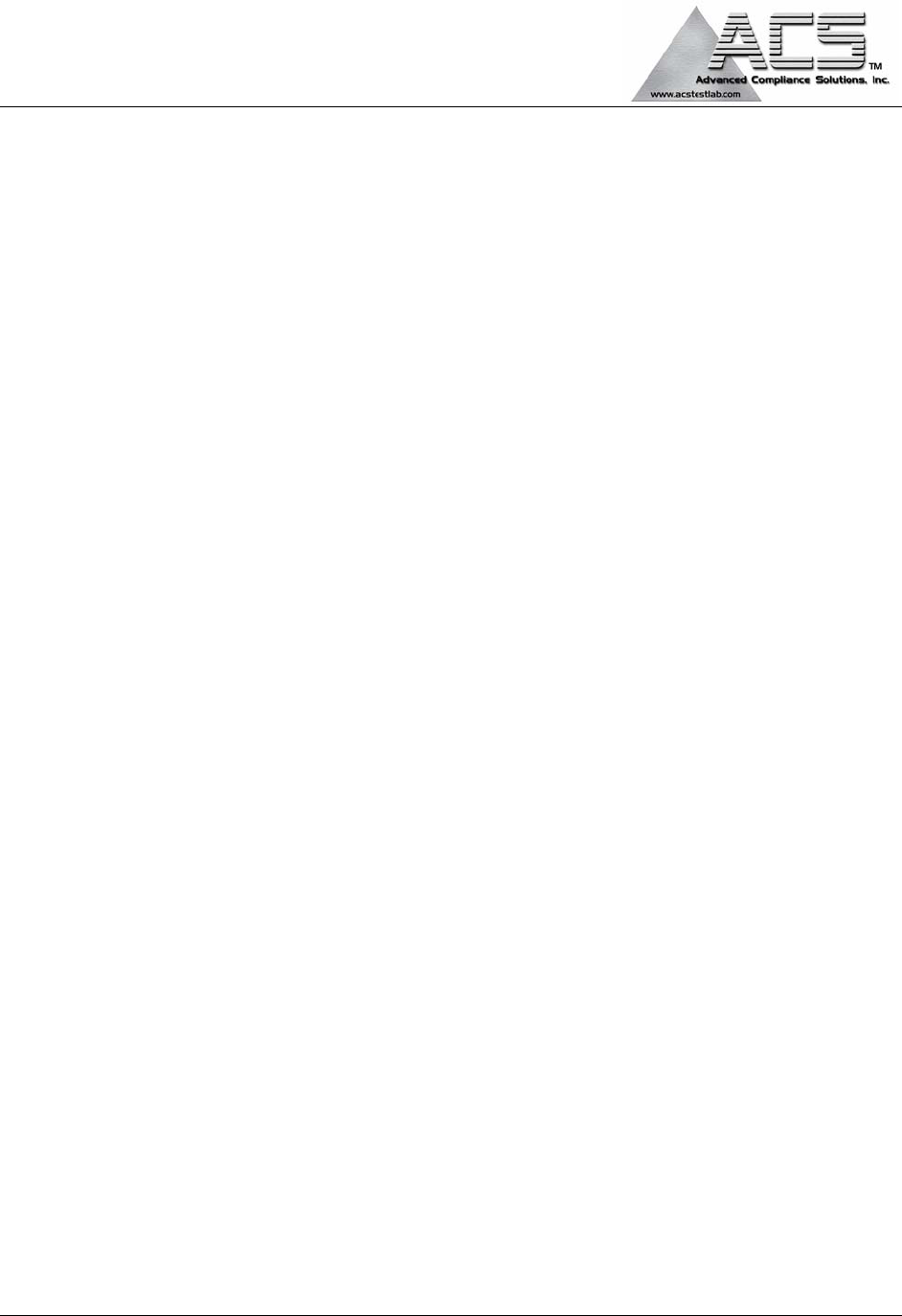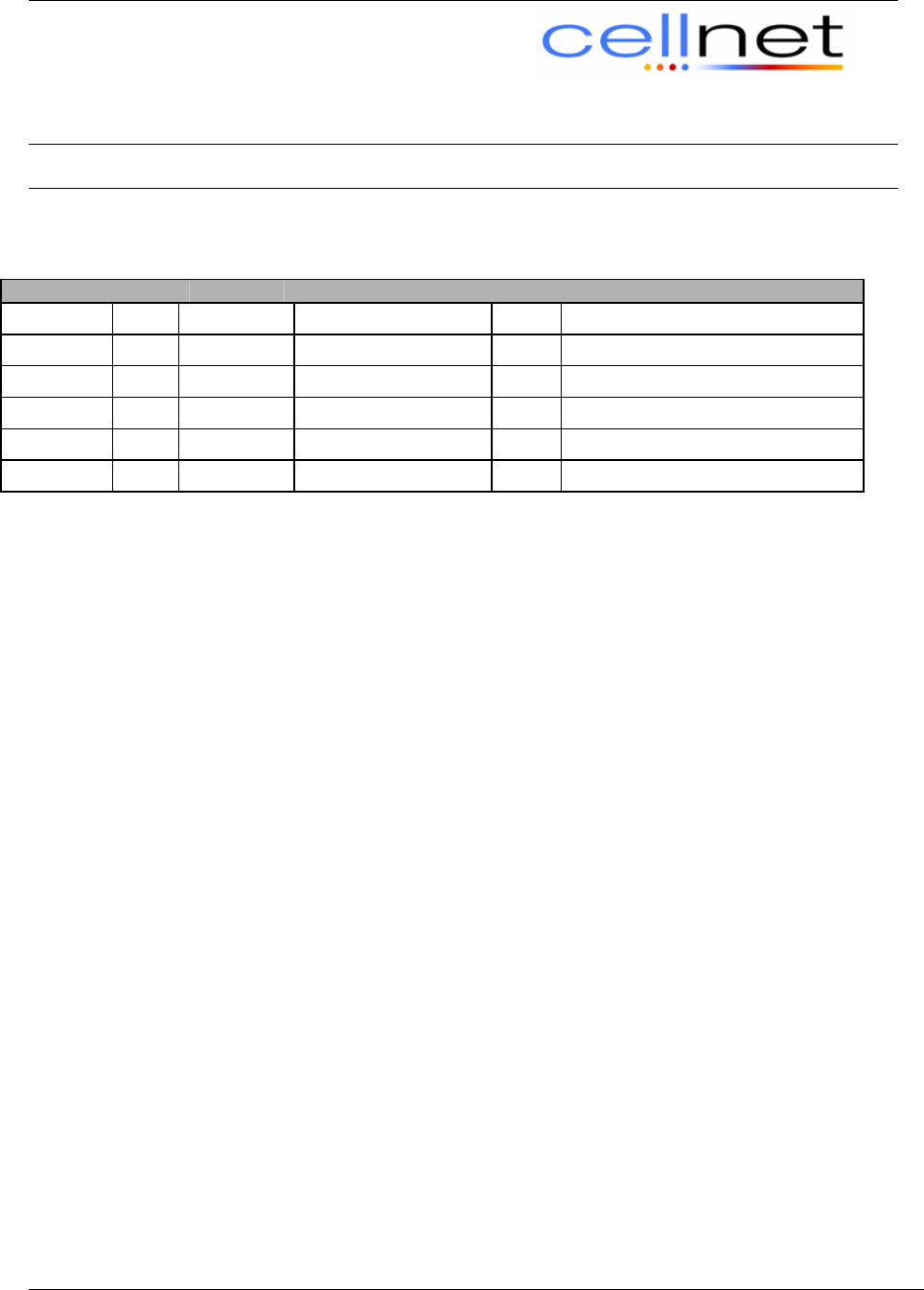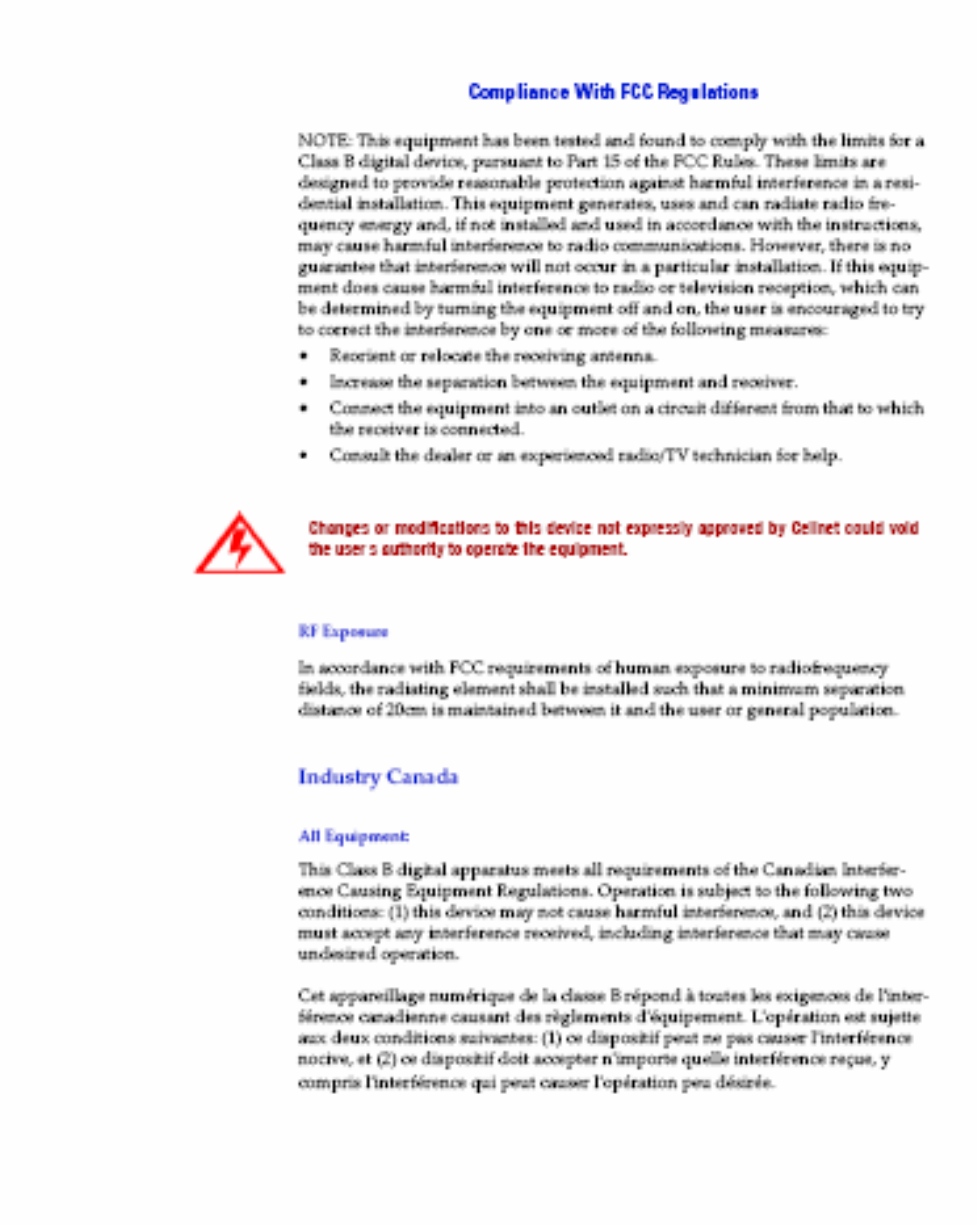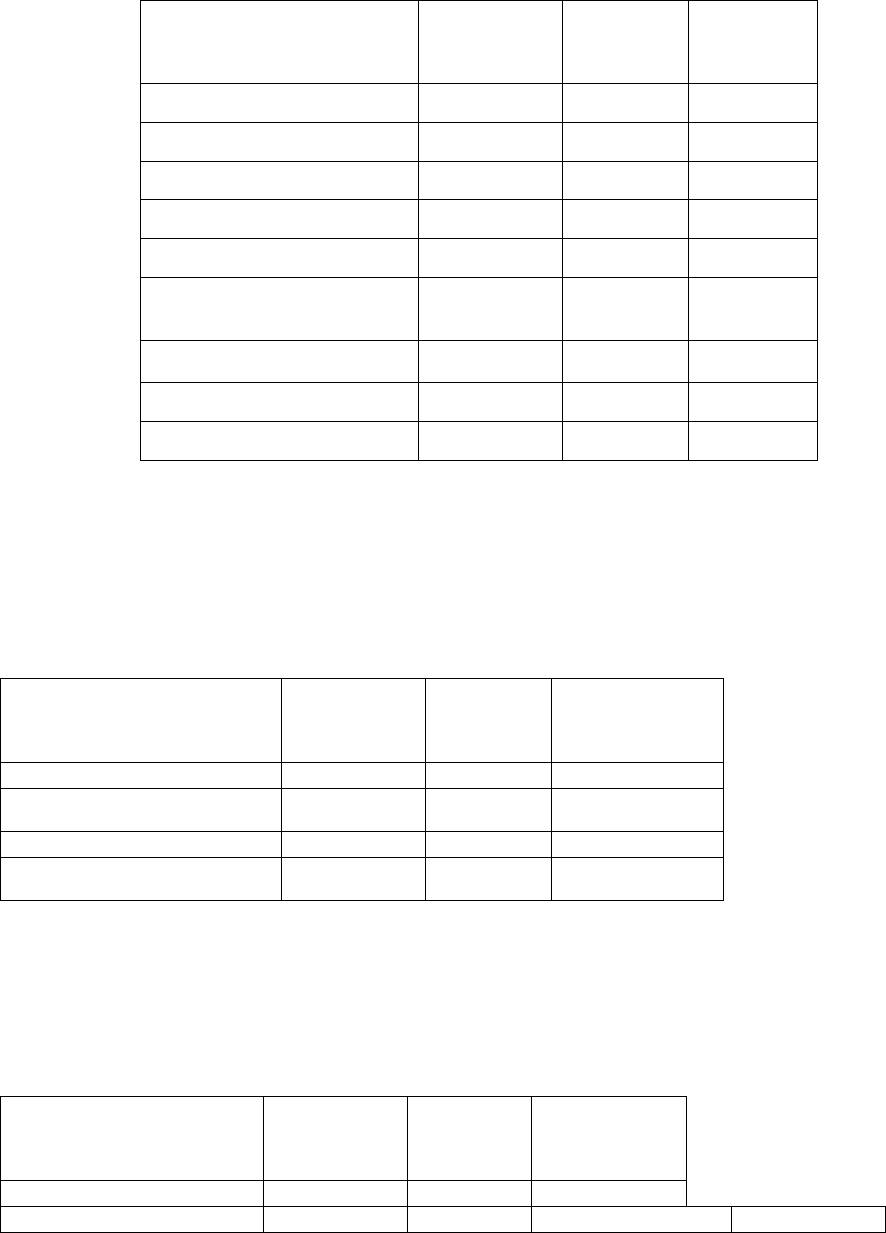Landis Gyr Technology TOP04 TAKE OUT POINT (TOP) User Manual USERS MANUAL
Landis+Gyr Technology, Inc. TAKE OUT POINT (TOP) USERS MANUAL
USERS MANUAL

5015 B.U. Bowman Drive Buford, GA 30518 USA Voice: 770-831-8048 Fax: 770-831-8598
FCC Part 15 Subpart C
Transmitter Certification
Frequency Hopping Spread Spectrum Transmitter
FCC ID: R7PTOP04
FCC Rule Part: 15.247
ACS Report Number: 05-0327-15C
Manufacturer: Cellnet Technology, Inc.
Model: Take Out Point (TOP)
Installation Guide

Title: SOP Takeout Point Installation
Doc. Number: XX-XXXX Revision: 01 Page 1 of 9
PROPRIETARY INFORMATION NOTICE:
THIS DOCUMENT CONTAINS TRADE SECRETS AND CONFIDENTIAL INFORMATION OF CELLNET AND SHALL NOT BE
DUPLICATED IN WHOLE OR IN PART OR USED OR DISCLOSED FOR ANY PURPOSE OTHER THAN THAT APPROVED BY
CELLNET.
© Cellnet 2005. All rights reserved.
Revision History
ECO/ECN Rev Date Author Page Description
XXXXX 01 G. Farmer ALL INITIAL RELEASE

CELLNET
313-B N. Highway 11 • West Union, SC 29696
DOCUMENT NUMBER: 83-1023 Page 1 of 9

CELLNET
313-B N. Highway 11 • West Union, SC 29696
DOCUMENT NUMBER: 83-1023 Page 2 of 9
Contents
CONTENTS ...........................................................................................................................................................2
FIGURES................................................................................................................................................................2
ACRONYMS..........................................................................................................................................................2
RELATED DOCUMENTS ...................................................................................................................................3
1. CELLNET NETWORK..............................................................................................................................3
2. TOP ENCLOSURE/MOUNTING .............................................................................................................3
3. TOP PROGRAMMING..............................................................................................................................3
4. REQUIRED TOOLS & MATERIALS......................................................................................................3
4.1. Contractor-provided tools..............................................................................................................................4
4.2. Contractor-provided material.........................................................................................................................4
5. CUSTOMER NOTIFICATION/AUTHORIZATION .............................................................................5
5.1. Appointment for building access...................................................................................................................5
5.2. Utility or municipal authorization for pole attachment..................................................................................5
6. SITE LOCATION AND VERIFICATION...............................................................................................5
6.1. Site verification..............................................................................................................................................5
6.2. Bucket trucks.................................................................................................................................................5
7. INSTALLATION.........................................................................................................................................6
7.1. General...........................................................................................................................................................6
7.2. Power Requirements......................................................................................................................................6
7.3. Power connections.........................................................................................................................................6
7.4. TOP mechanical mounting ............................................................................................................................6
7.5. Power cable preparation ................................................................................................................................8
7.6. Ethernet Connections.....................................................................................................................................8
Figures
Acronyms
MCC MicroCell Controller
LAN RADIO Local Radio Network
WAN Wide Area Network
860 CPU Central Processing Unit
ESD Electrostatic Discharge

CELLNET
313-B N. Highway 11 • West Union, SC 29696
DOCUMENT NUMBER: 83-1023 Page 3 of 9
Related Documents
Document Title Part Number Revision Date
Take Out Point programming guide
1. Cellnet Network
The CellNet Automated Meter Reading network is used to transfer information from a number of
endpoints usually distributed over a large geographical area. The most common endpoints are from
electrical, gas and water meters. Additional potential endpoints include parking meters, vending
machines and copiers. The network includes a Radio Frequency (RF) Wide Area Network (WAN) and
an RF Local Area Network (LAN). The WAN consists of either CellMasters (CM), or Take Out Points
(TOP) communicating with MicroCell Controllers (MCC) Or Infinet Concentrators (IC). The LAN is the
RF link between the MCC or IC and meters or other end points with CellNet meter modules installed.
The endpoint data is transmitted via a radio frequency (RF) link to the MCC/TOP where it is stored and
processed. The MCC or IC then transmits this information to the Network Operations Center via a RF
link to the CellMaster or TOP base station. This SOP deals with the installation of TOP’s.
2. TOP enclosure/mounting
The TOP is a NEMA-4 enclosure with a power supply, lead-acid battery, system CPU board
and four radios. It weighs approximately 42 pounds and typically mounts on wooden utility
poles using two 5/8" diameter through bolts or on street lights with two stainless steel bands.
It can also be mounted on a unistrut member sunk into the ground next to a transformer.
3. TOP programming
Programming of the TOP is required prior to installation. The TOP programming process consists of entering
GPS and other data such as color into the radio. This task is best done in batch mode where the TOP’s are
stored prior to field deployment for installation. For the purposes of this SOP, it is assumed that the
programming has already been completed and the information provided with work order/installation sheet.
The TOP will typically be labeled with the IPC address visible from the outside.
4. Required Tools & Materials
The following is a list of tools and materials for installing the TOP,s for utility pole and streetlight
mounting. For building and pad-mount installations, the same tools will apply with some additional
materials required. Check under the type of installation for materials and tools needed to perform the
installation. In the pad-mount and building installation sections there will be a tool or two not included in
the spreadsheet.

CELLNET
313-B N. Highway 11 • West Union, SC 29696
DOCUMENT NUMBER: 83-1023 Page 4 of 9
Material Provided by
Cellnet Wood
Utility Pole
Steel
Street
Light
Pole
Pad-
mount
XFMR
Takeout Point X X X
LAN omni whip antennas X X X
WAN omni whip antenna X X X
Streetlight head adapter X
RF coaxial cables** X X X
AC power quick disconnect
connector with 8 ft. or 18 ft.
wire attached X X X
Female N – bulkhead
connectors X X
MCC strap mounting brackets X
** These come in different lengths, 5, 10, 15, 20, and 25, are most commonly used
4.1. Contractor-provided tools
The following table contains specific tools required for the installation of TOP’s on the three primary
installation types. The contractor shall also provide typical tools required for mechanical and electrical
installations such as normal lineman tools, wire cutters, hammer, assorted screw drivers, socket set,
wrenches, voltmeter, compass, tape measure, etc.
Tools Provided by
Contractor Wood
Utility Pole Steel
Street
Light
Pole
Pad-mount
XFMR
steel banding tool X
drill (battery, gas or electric
powered) X X
drill bits for lag and D/A bolt X X
Laptop computer with serial
port* X X X
* May not be required. Refer to statement of work or work project request.
4.2. Contractor-provided material
The following table contains specific material required for the installation of MCCs on the
four primary installation types. Note: additional material such as screws, nuts, bolts may be
required to complete installations. The contractor shall provide this material for each
installation.
MATERIAL PROVIDED
BY CONTRACTOR
Wood
Utility
Pole
Steel
Street
Light
Pole
Pad-mount
XFMR
TBD

CELLNET
313-B N. Highway 11 • West Union, SC 29696
DOCUMENT NUMBER: 83-1023 Page 5 of 9
5. Customer Notification/Authorization
5.1. Appointment for building access
The Below statement is a placeholder until statement can be reviewed.
Cellnet shall provide a point of contact for each building that needs access by the contractor. It shall
be the contractor’s responsibility to schedule the required appointments and to make notifications to
the appropriate building owners, managers or tenants before performing the TOP installation.
5.2. Utility or municipal authorization for pole attachment
The Below statement is a placeholder until statement can be reviewed.
When the TOP is to be located on utility or municipal property such as utility poles and streetlight
poles, Cellnet will have a general agreement in place to install on these poles. There may be a
requirement for the utility or municipal to approve individual sites. This approval will be noted on the
TOP installation sheet or provided in another format approved by Cellnet. It is the contractor’s
responsibility to ensure that approval has been given for each installation.
6. Site location and verification
6.1. Site verification
The Below statement is a placeholder until statement can be reviewed.
The contractor shall be responsible for installing the TOP on the correct pole or building. The
contractor should make every effort to confirm that they have the correct location.
6.2. Bucket trucks
CELLNET
313-B N. Highway 11 • West Union, SC 29696
DOCUMENT NUMBER: 83-1023 Page 6 of 9
The Below statement is a placeholder until statement can be reviewed.
The contractor shall provide a bucket truck for installations requiring them. A bucket truck is used for
most wood and streetlight pole installations. The contractor shall comply with all local traffic
ordinances while performing the TOP installations.
7. Installation
7.1. General
• For every TOP that is to be installed, a TOP Installation Sheet will be provided.
• The sheet has the street address, type of mounting (wood pole, streetlight pole, building, etc.), access
(bucket truck or climbed manually).
• The TOP uses a quick-disconnect connector that must be wired to a single phase 120 VAC or 240 VAC
circuit.
7.2. Power Requirements
The Takeout Point (TOP) requires the following voltage: 120 VAC +/- 20% (96-144 VAC), 60 Hz +/- 1
Hz or 240 VAC +/- 20% (192-288 VAC), 60 Hz +/- 1 Hz The Takeout Point (TOP) has the following
current requirements:
1 Amp max at 120VAC (Approx.)
.5 Amp typical at 240 VAC (Approx.)
7.3. Power connections
7.3.1. VERIFY THAT THE POWER SOURCE IS EITHER 120 VAC OR 240 VAC
SINGLE PHASE.
7.3.2. VERIFY THAT THE POWER SUPPLY JUMPER IS CONNECTED FOR THE
APPROPRIATE SOURCE VOLTAGE.
7.3.3. RUN QUICK-DISCONNECT WIRE THROUGH LIQUID TIGHT CONDUIT WITH
APPROPRIATE CONNECTORS. ADDITIONAL DETAIL WILL BE PROVIDED IN
FOLLOWING PROCEDURES FOR THE DIFFERENT TOP INSTALLATION TYPES.
7.4. TOP mechanical mounting
CELLNET
313-B N. Highway 11 • West Union, SC 29696
DOCUMENT NUMBER: 83-1023 Page 7 of 9
7.4.1. STREET LIGHT POLE (OTHER THAN WOOD)
The final guidelines provided by the utility or municipality determine where the TOP can be installed. It
is the contractor’s responsibility to know and follow the utility or municipality guidelines before installing
the TOP and antenna.
7.4.2. TOP INSTALLATION PROCEDURE
1. Verify the TOP and antenna can be mounted on the pole as indicated on the TOP Installation
Sheet. If the TOP and/or antenna cannot be mounted as indicated, contact a Cellnet Inc.
representative and proceed to the next installation site.
2. Verify that the streetlights have AC power during daylight hours. Even if a photocell is installed on
the streetlight head, it doesn’t guarantee it is not on a controller. When in doubt, pull the photocell and
measure for 120 or 240 volts AC.
3. Verify that the TOP power supply voltage jumper is in the correct position.
4. Attach the streetlight pole adapter to the pole using the 3/4 banding material in the orientation
described on the TOP Installation Sheet. The flat side of the adapter bracket faces outward from the
pole and the banding goes through the slots on the bracket.
5. Attach the MCC to the adapter bracket with the supplied hardware.
7.4.3. WOOD UTILITY POLE
7.4.3.1. Wood utility pole
The final guidelines provided by the utility determine where the TOP can be installed. Some utilities
allow the TOP to be mounted above the secondary wires, while others require the TOP to be below
the secondary wires. In most cases, the remote antenna can be mounted above the secondary and
typically it is mounted below the primary. It is the contractor’s responsibility to know and follow the
utility guidelines before installing the TOP and antenna.
CELLNET
313-B N. Highway 11 • West Union, SC 29696
DOCUMENT NUMBER: 83-1023 Page 8 of 9
7.4.3.2. TOP Installation procedure
1. Verify the TOP and antenna can be mounted on the pole as indicated on the installation sheet. If
the MCC and/or antenna cannot be mounted as indicated, contact a Cellnet Inc representative and
proceed to the next installation site.
2. Drill two 3/4" diameter holes through the wooden pole at 12 1/2 inches center to center. The holes
should be positioned to ensure the TOP would be located at the height and direction described in the
TOP Installation Sheet.
3. Mount the TOP mounting bracket on two galvanized 5/8 through bolts (D/A bolts). The bolts must be
securely tightened to ensure the TOP will not move. Note: ½ through bolts may be used if this is the
standard size used by the local utility.
7.5. Power cable preparation
1. Cut the liquid tight conduit to length.
2. Feed the quick disconnect wires through, then attach the conduit connectors LTFM-50 and UF-50
connectors. This end of the conduit will be attached to the secondary.
3. Attach the end with the quick disconnect to the TOP. Take the conduit and streamline it using the
.U. nails along the pole to the secondary. Provide tension relief and a service loop on the conduit
at the base of the TOP.
4. Drill a small hole at the bottom of the relief loop to drain moisture.
5. On the end of the piece of conduit with the LT connectors, bend the conduit downward to help
prevent water from entering.
6. Seal the connector with RTV where the wires exit the conduit.
7. Cables part numbers are 105704-000 for a ten-foot cable, 105704-001 for a thirty-foot cable, and
105704-002 for a four-foot cable.
8. Depending on the utility requirements, physically connecting to the secondary may have
additional requirements that have to be met. It is possible that the utility will do this. Take the
naked wires from the end of the liquid tight conduit and securely clamp it to the secondary. This is
a compression type fitting. Sometimes a run of secondary is needed from an adjacent pole to
provide the power for this TOP.
7.6. Ethernet Connections
There is an Ethernet Port on the TOP that has a weather tight connection. This port should be
connected to a internet connection by no more than 30 meters of shielded CAT 5E cable.